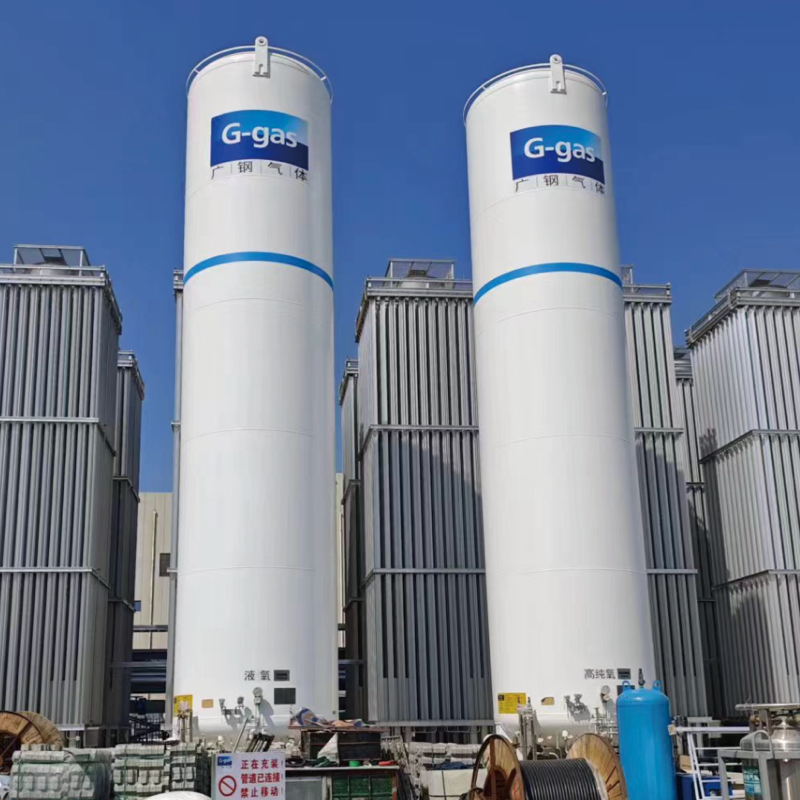close
Choose Your Site
Global
Social Media



| Availability: | |
|---|---|
| Quantity: | |











| Parameter | Value |
|---|---|
| Origin | Wuxi, China |
| Brand | Wuxi Triumph Gases Equipment |
| Heat Exchanging Material | Patented efficient aluminum material |
| Heat Exchanging Pipe Diameter | Ø200 |
| Work Pressure | 0.8-100.0 MPa |
| Capacity | 50-16,000 Nm³/h |
| Suitable Medium | LOX, LIN, LAr, LCO, LH₂, LNG, LC₂H₄, LPG |
| Standards Compliance | GB, ASME, PED (CE), CCS, CNNC, CASC |
The Ambient Air Vaporizer (AAV) is a passive, energy-efficient solution that leverages ambient air temperature to vaporize LNG. Comprising aluminum finned tubes (with fin density of 10–15 fins per inch) arranged in vertical or horizontal configurations, AAV transfers heat from the surrounding air to LNG without external power. This makes it an eco-friendly choice for small to medium-scale applications where reducing carbon footprint and operational costs is a priority .
Energy-Free Operation
Eliminates reliance on electricity or fuel, reducing operational costs by 80% compared to heated vaporizers (e.g., water bath or electric vaporizers) that require continuous energy input.
Suitable for off-grid locations (e.g., remote mining camps) or areas with strict environmental regulations (e.g., EU Emissions Trading System zones).
Weather-Resilient Design
Finned tubes coated with anti-corrosive materials (e.g., aluminum alloy 3003 with epoxy coating, thickness 50–80μm) withstand saltwater exposure (in coastal areas) and UV radiation (in sunny regions).
Optional wind baffles (angle-adjustable up to 45°) enhance air circulation in low-wind conditions, maintaining consistent vaporization efficiency (≥85%) even at wind speeds below 2 m/s.
Low Maintenance
No moving parts or complex controls, requiring only annual visual inspections (to check for fin damage) and fin cleaning (using high-pressure water or air) to remove debris like dust, leaves, or snow.
Small-Scale LNG Terminals: Ideal for fueling stations (for LNG-powered trucks), hospitals, and remote communities with daily gas demand below 10,000 Nm³.
Emergency Backup Systems: Provides reliable vaporization during power outages, ensuring continuity in critical facilities such as data centers or water treatment plants.
Industrial Processes: Supports LNG-driven heating systems in food processing (e.g., bakery ovens) or cold storage industries (where waste cold from LNG can also be reused for refrigeration).
Q: How does AAV perform in freezing temperatures?
A: In temperatures below -10°C, AAV may require supplementary heating (e.g., electric trace heaters with 50–100 W/m power output) to prevent ice formation on fins, which blocks heat transfer. This ensures vaporization temperatures ≥5°C at the outlet, meeting pipeline safety standards (EN 13432) .
Q: What is the lifespan of AAV?
A: With proper maintenance, AAV can operate for 15–20 years—significantly longer than active vaporizers (8–12 years)—due to its simple structure and corrosion-resistant materials.
Q: Can AAV be combined with other vaporizers?
A: Yes. AAV is often paired with water bath vaporizers in hybrid systems: AAV handles base load (60–70% of demand) for energy efficiency, while water bath units activate during cold snaps or peak demand to maintain output.

| Parameter | Value |
|---|---|
| Origin | Wuxi, China |
| Brand | Wuxi Triumph Gases Equipment |
| Heat Exchanging Material | Patented efficient aluminum material |
| Heat Exchanging Pipe Diameter | Ø200 |
| Work Pressure | 0.8-100.0 MPa |
| Capacity | 50-16,000 Nm³/h |
| Suitable Medium | LOX, LIN, LAr, LCO, LH₂, LNG, LC₂H₄, LPG |
| Standards Compliance | GB, ASME, PED (CE), CCS, CNNC, CASC |
The Ambient Air Vaporizer (AAV) is a passive, energy-efficient solution that leverages ambient air temperature to vaporize LNG. Comprising aluminum finned tubes (with fin density of 10–15 fins per inch) arranged in vertical or horizontal configurations, AAV transfers heat from the surrounding air to LNG without external power. This makes it an eco-friendly choice for small to medium-scale applications where reducing carbon footprint and operational costs is a priority .
Energy-Free Operation
Eliminates reliance on electricity or fuel, reducing operational costs by 80% compared to heated vaporizers (e.g., water bath or electric vaporizers) that require continuous energy input.
Suitable for off-grid locations (e.g., remote mining camps) or areas with strict environmental regulations (e.g., EU Emissions Trading System zones).
Weather-Resilient Design
Finned tubes coated with anti-corrosive materials (e.g., aluminum alloy 3003 with epoxy coating, thickness 50–80μm) withstand saltwater exposure (in coastal areas) and UV radiation (in sunny regions).
Optional wind baffles (angle-adjustable up to 45°) enhance air circulation in low-wind conditions, maintaining consistent vaporization efficiency (≥85%) even at wind speeds below 2 m/s.
Low Maintenance
No moving parts or complex controls, requiring only annual visual inspections (to check for fin damage) and fin cleaning (using high-pressure water or air) to remove debris like dust, leaves, or snow.
Small-Scale LNG Terminals: Ideal for fueling stations (for LNG-powered trucks), hospitals, and remote communities with daily gas demand below 10,000 Nm³.
Emergency Backup Systems: Provides reliable vaporization during power outages, ensuring continuity in critical facilities such as data centers or water treatment plants.
Industrial Processes: Supports LNG-driven heating systems in food processing (e.g., bakery ovens) or cold storage industries (where waste cold from LNG can also be reused for refrigeration).
Q: How does AAV perform in freezing temperatures?
A: In temperatures below -10°C, AAV may require supplementary heating (e.g., electric trace heaters with 50–100 W/m power output) to prevent ice formation on fins, which blocks heat transfer. This ensures vaporization temperatures ≥5°C at the outlet, meeting pipeline safety standards (EN 13432) .
Q: What is the lifespan of AAV?
A: With proper maintenance, AAV can operate for 15–20 years—significantly longer than active vaporizers (8–12 years)—due to its simple structure and corrosion-resistant materials.
Q: Can AAV be combined with other vaporizers?
A: Yes. AAV is often paired with water bath vaporizers in hybrid systems: AAV handles base load (60–70% of demand) for energy efficiency, while water bath units activate during cold snaps or peak demand to maintain output.
